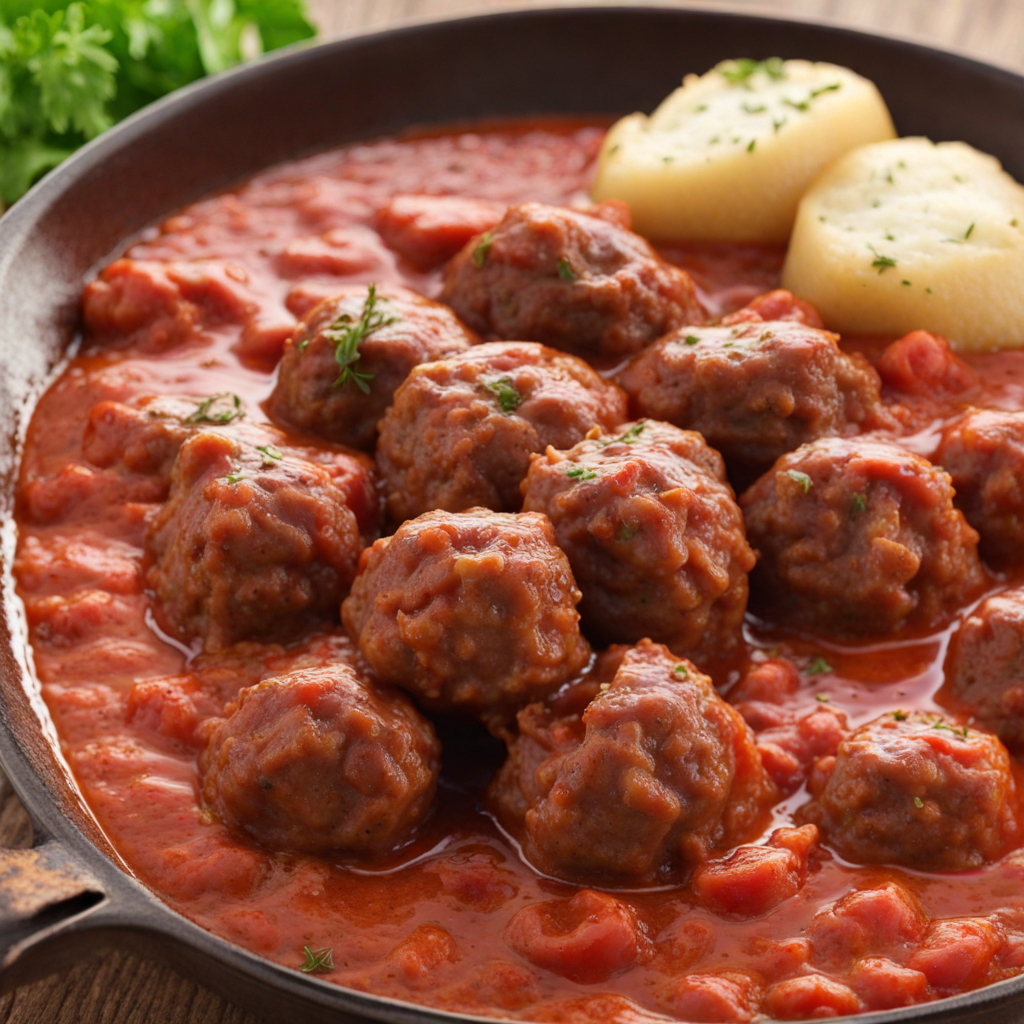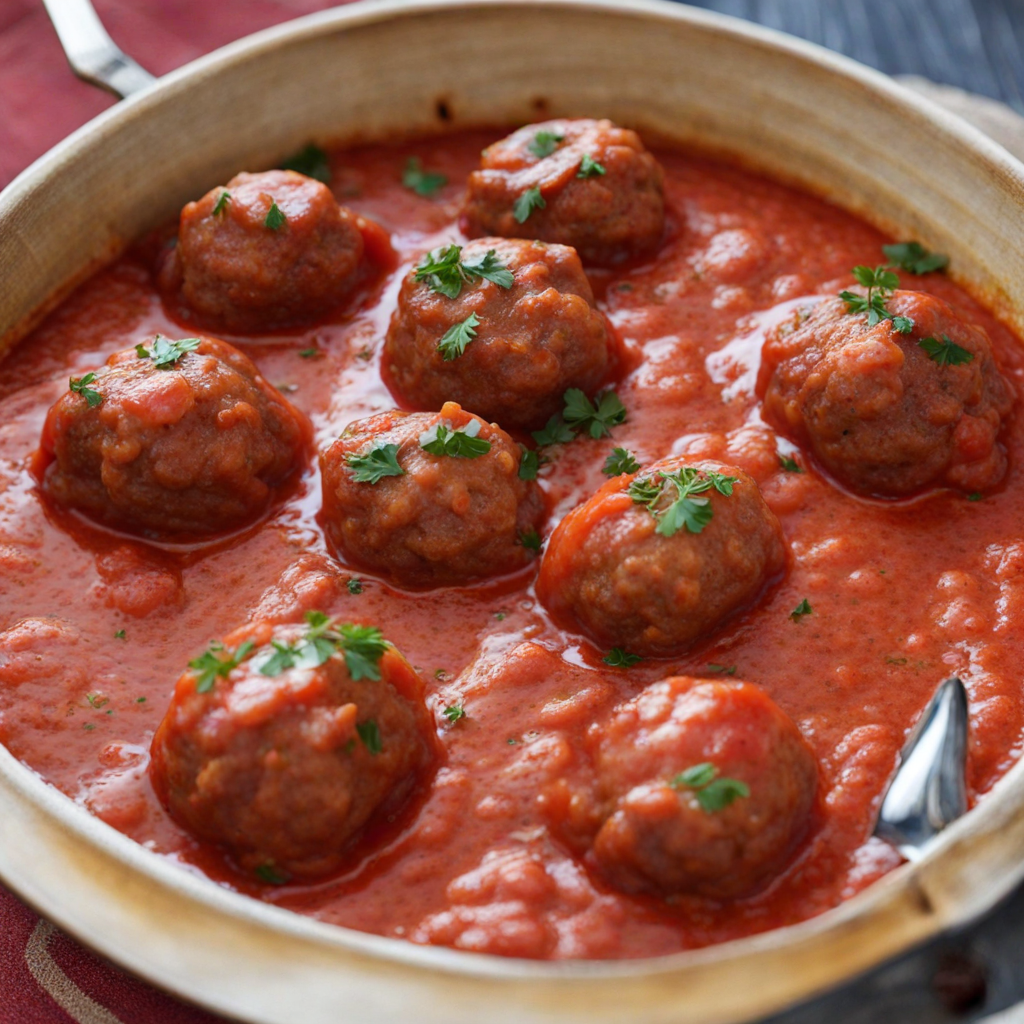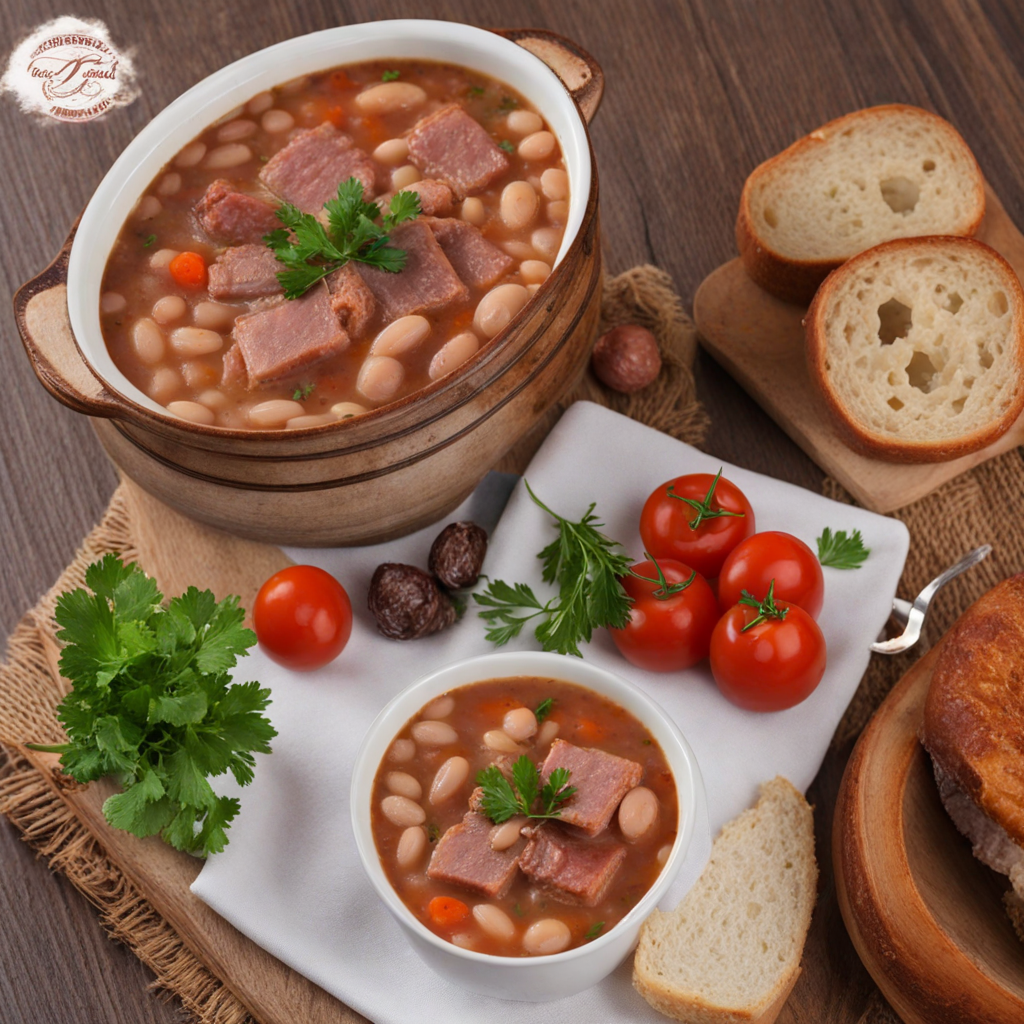Ćufte
Ćufte are traditional Bosnian meatballs that embody the rich flavors and comforting essence of Balkan cuisine. Typically made from a blend of ground beef or lamb mixed with finely chopped onions, garlic, and a variety of spices, these savory morsels are often enhanced with herbs like parsley and mint. The mixture is formed into small balls and can be either baked, fried, or simmered in a sauce, allowing for versatility in preparation that caters to different palates. The exterior is usually crispy and golden, while the inside remains juicy and tender, creating a delightful contrast in texture with each bite. Served with a side of creamy mashed potatoes or fluffy rice, Ćufte often come accompanied by a rich tomato sauce or a tangy yogurt dip that adds a layer of creaminess and acidity. The sauce is typically made from fresh tomatoes, onions, and spices, simmered to perfection to enhance the natural flavors of the meatballs. This combination not only elevates the dish but also provides a satisfying balance of flavors, making it a hearty meal ideal for family gatherings or cozy dinners. In addition to its main components, Ćufte can be further personalized with regional variations that incorporate local ingredients or family recipes. Some versions might include grated cheese, breadcrumbs, or different spices, reflecting the diverse culinary heritage of Bosnia and Herzegovina. This dish not only serves as a delicious meal but also as a cultural experience, inviting those who try it to explore the warmth and hospitality of Bosnian traditions through its comforting and flavorful profile.
How It Became This Dish
The Culinary Journey of Ћуфте: Bosnia and Herzegovina's Beloved Meatballs Origins and Etymology Ћуфте, pronounced "chuf-teh," are savory meatballs that hold a cherished place in the culinary landscape of Bosnia and Herzegovina. Their origins can be traced back to the Ottoman Empire, which profoundly influenced the region's culture, cuisine, and daily life from the 15th century until the late 19th century. The name "ћуфте" itself is derived from the Turkish word "köfte," which translates to "meatball." This etymology signifies the melding of culinary traditions that occurred as the Ottomans introduced diverse cooking methods and ingredients to the Balkans. The basic concept of minced meat formed into balls has ancient roots, seen across various cultures, but it was the Ottomans who perfected and popularized the dish. As the empire expanded, it absorbed local ingredients and flavors, creating a rich tapestry of culinary practices. In Bosnia and Herzegovina, the incorporation of spices, herbs, and cooking techniques led to variations that reflect the region's unique agricultural bounty and cultural identity. Cultural Significance In Bosnia and Herzegovina, ћуфте are more than just a dish; they symbolize hospitality and familial bonds. They are a staple at gatherings, celebrations, and family meals, often served alongside traditional accompaniments like mashed potatoes, rice, or fresh bread. The act of preparing ћуфте can be a communal affair, with family members coming together to mix, shape, and cook the meatballs, fostering a sense of unity and shared heritage. The significance of ћуфте extends beyond mere sustenance. They represent the resilience and adaptability of Bosnian culture through centuries of change and turmoil. During the wars in the 1990s, when many traditional practices faced disruption, the preparation and sharing of ћуфте became a means of preserving cultural identity and community ties, serving as a comforting reminder of home and heritage. Ingredients and Preparation Traditionally, ћуфте are made from a mixture of minced meat—commonly beef or lamb—combined with rice or breadcrumbs, onions, garlic, and a blend of spices such as paprika, black pepper, and salt. Fresh herbs, particularly parsley and dill, are often added to enhance flavor. The mixture is kneaded together to create a homogenous blend, shaped into round balls, and then either pan-fried, baked, or simmered in a rich tomato sauce. Regional variations of ћуфте exist, with some families adding their unique twist to the recipe. For instance, in certain households, grated cheese might be included for a creamier texture, while others may incorporate seasonal vegetables to boost nutritional value. The flexibility of the dish allows it to adapt to the changing availability of ingredients, reflecting the agricultural practices of the region. Development Over Time As Bosnia and Herzegovina has evolved, so too has the dish of ћуфте. The 19th and 20th centuries saw significant changes in the region's sociopolitical landscape, which impacted culinary trends. With the rise of nationalism and the establishment of new national identities, traditional foods like ћуфте became symbols of cultural pride. Chefs and home cooks began to celebrate local flavors, further refining the recipe to emphasize Bosnian ingredients and cooking styles. The advent of globalization in the late 20th and early 21st centuries brought new influences to Bosnian cuisine, including international fast-food trends. While some younger generations gravitated toward quicker, processed options, many have embraced a resurgence of traditional cooking, leading to a renaissance of dishes like ћуфте. Cookbooks, culinary workshops, and food tourism have played a vital role in rekindling interest in authentic Bosnian cuisine, showcasing the rich history and flavors of ћуфте to a broader audience. Modern Interpretations and Global Influence Today, ћуфте can be found in homes, restaurants, and international food festivals, where they are often presented alongside other traditional Bosnian dishes, such as sarma (cabbage rolls) and baklava. Eateries in urban centers have even begun to experiment with fusion variations, incorporating global culinary elements while maintaining the essence of the dish. Moreover, the diaspora of Bosnians around the world has contributed to the spread of ћуфте beyond the Balkans. Bosnian immigrants have established restaurants and food stalls in countries such as Germany, the United States, and Australia, sharing their culinary heritage and introducing new audiences to the rich flavors of their homeland. The adaptability of the dish has allowed it to transcend cultural barriers, creating a sense of nostalgia and connection for those far from their roots. Conclusion In summary, ћуфте serve as a delicious emblem of Bosnia and Herzegovina's rich culinary history. From their Ottoman origins to their present-day status as a beloved comfort food, these meatballs encapsulate the resilience, adaptability, and communal spirit of Bosnian culture. The evolution of ћуфте reflects broader societal changes while retaining their essence as a symbol of home and hospitality. As we reflect on the journey of ћуфте, we are reminded of the power of food to connect us to our past, foster community, and celebrate cultural identity. Whether enjoyed in a family kitchen or a bustling restaurant, these savory meatballs continue to nourish not only the body but also the soul, bridging generations and cultures in every bite.
You may like
Discover local flavors from Bosnia And Herzegovina







